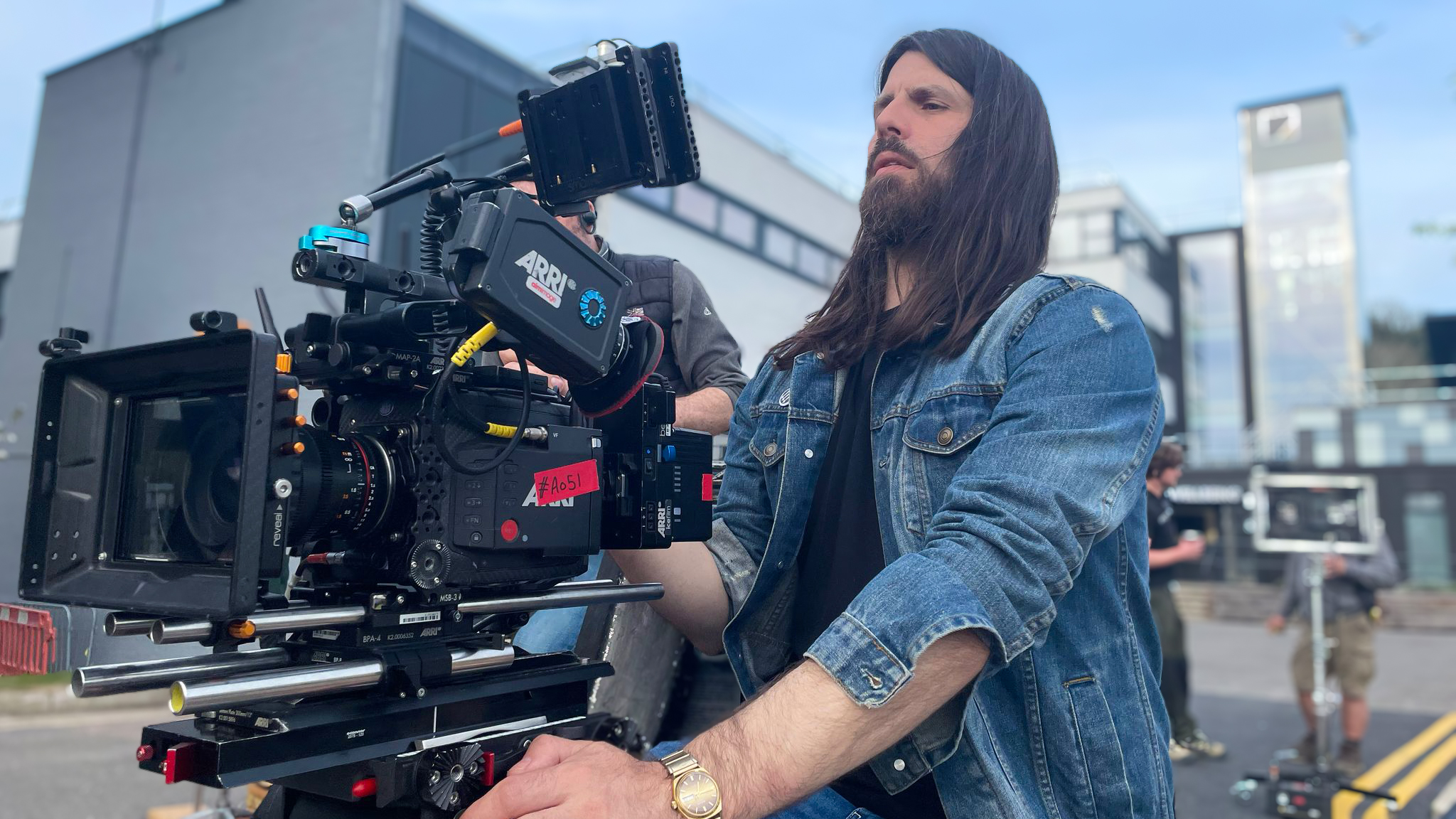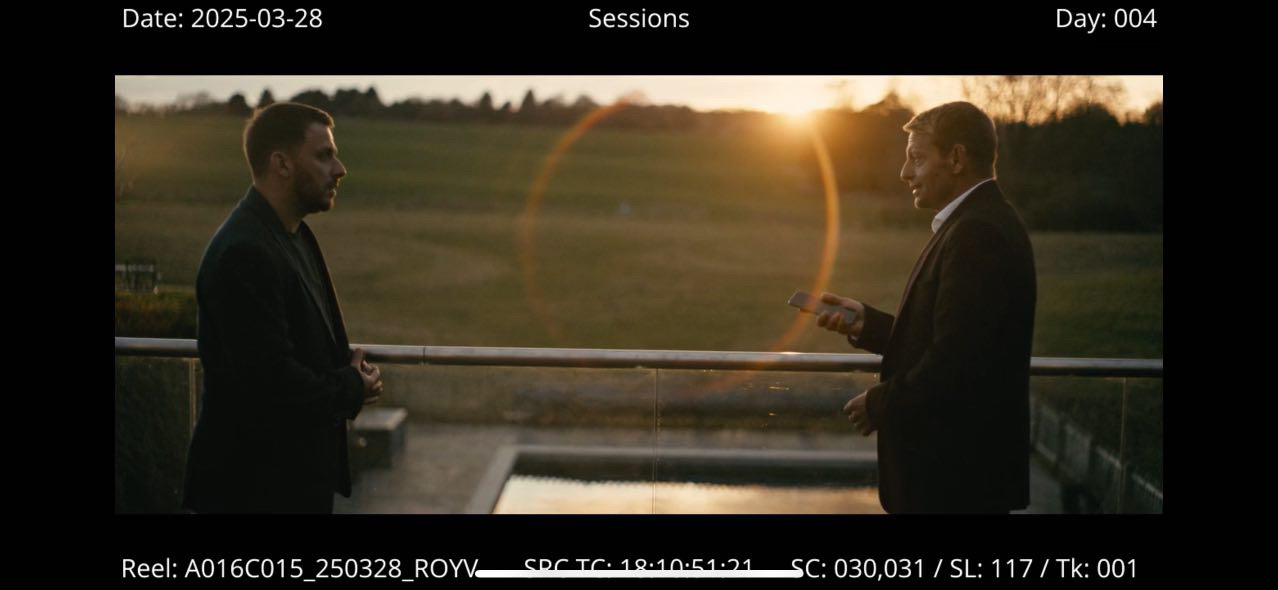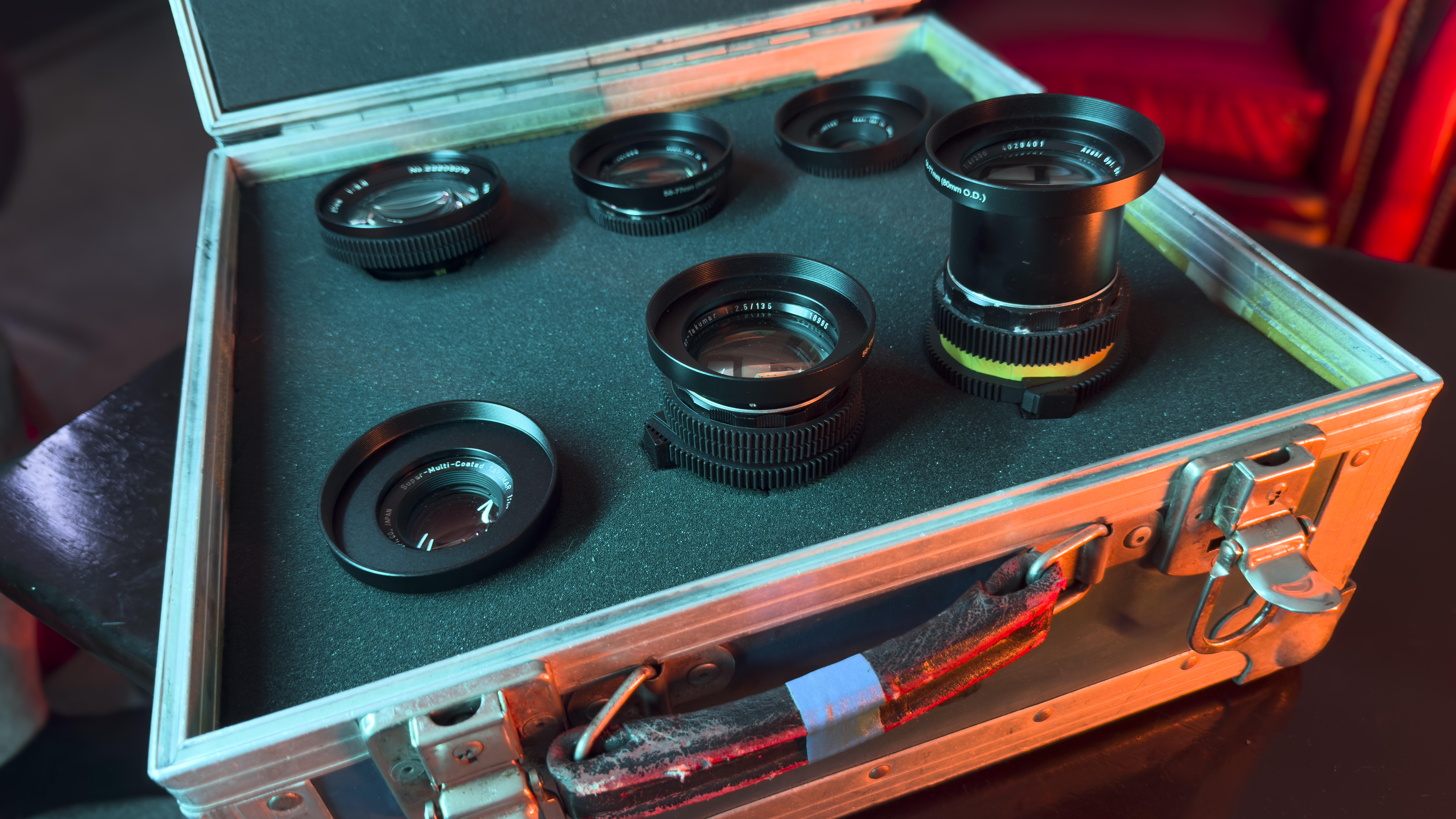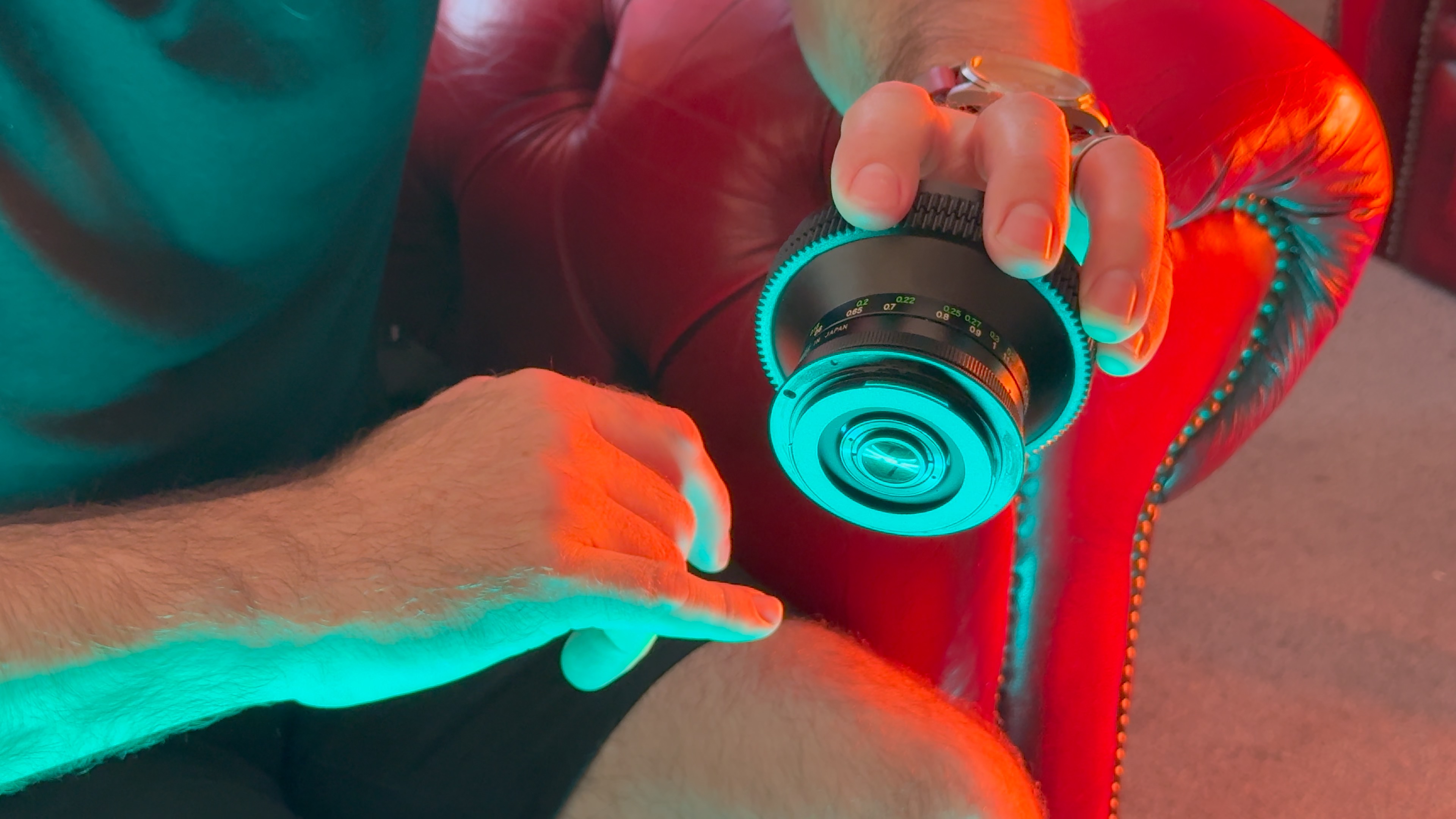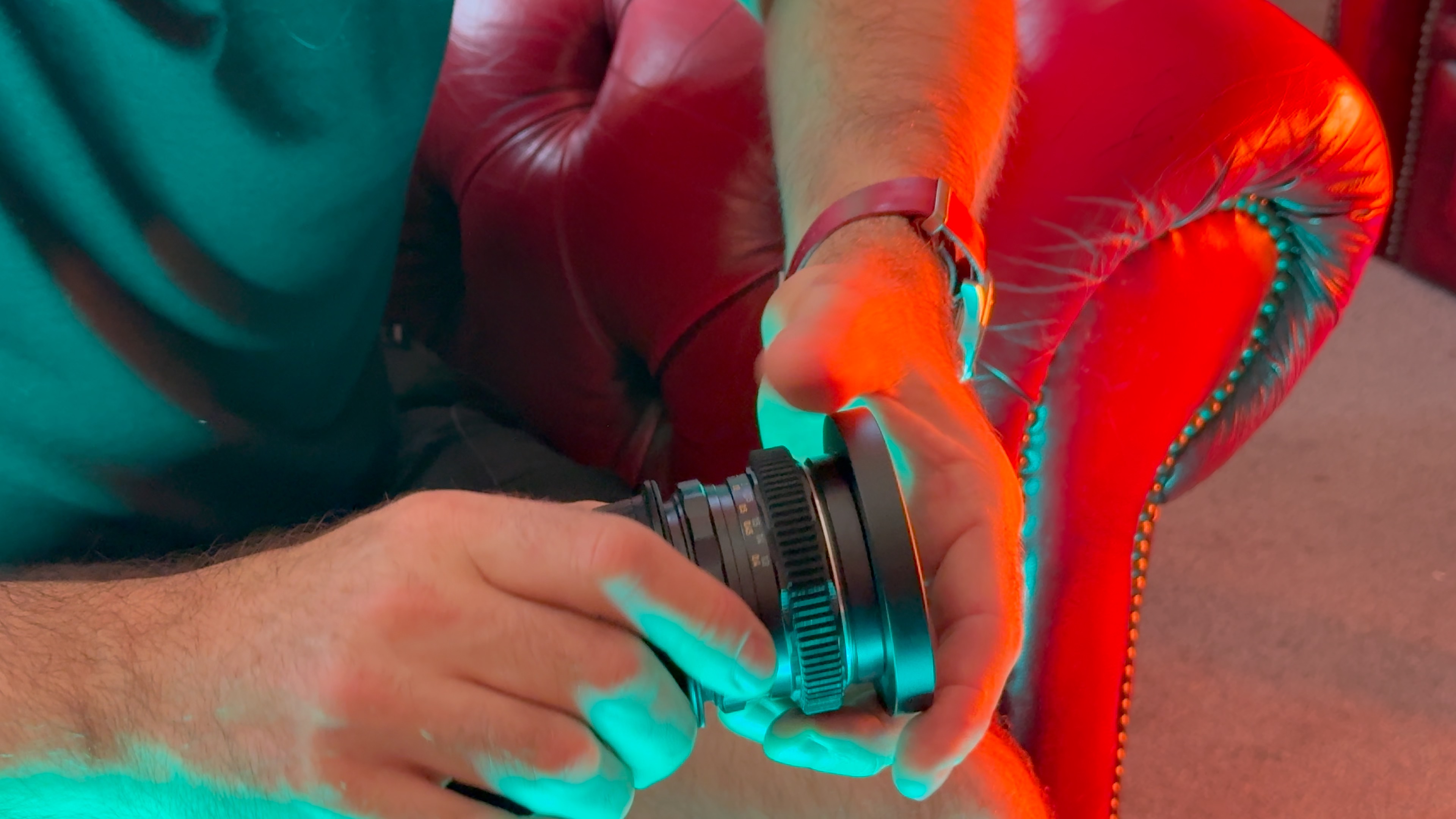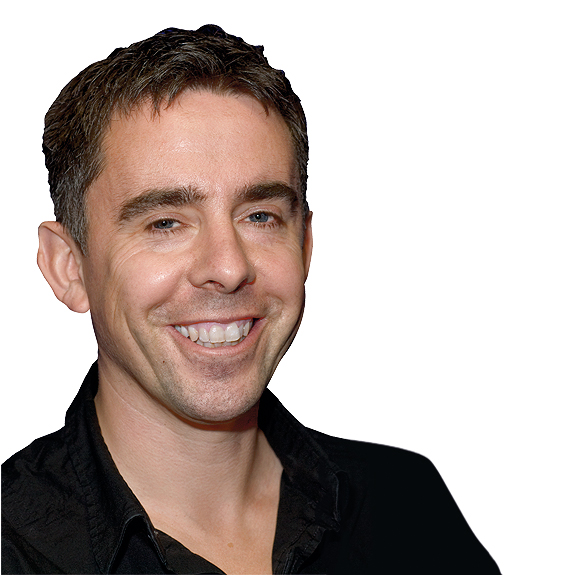Lighting, lenses and LUTS: cinematographer Andrew Rodger takes us behind the camera on his latest movie
Discover the tricks of the trade of cinematographer Andrew Rodger as he mixes vintage lenses with digital video cameras
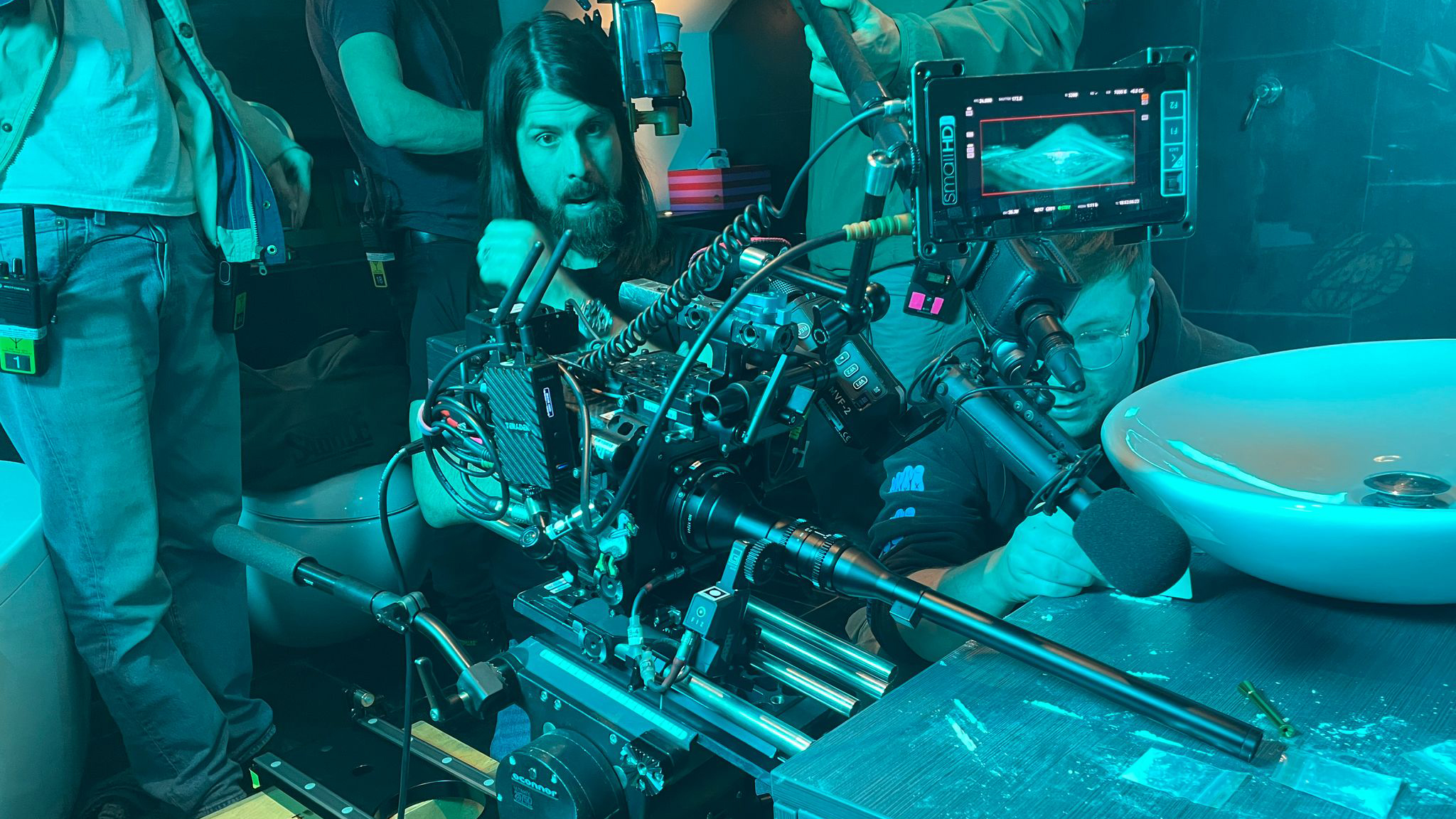
Back in August 2024 I chatted to cinematographer Andrew Rodger about the challenges of filming his ‘sharks on a plane’ cult movie, No Way Up, which hung around the Amazon Top 10 for over a week.
In June 2025 I reunited with Andrew on his return from filming the thriller movie, Sessions, to chat about how he used a set of vintage lenses to get a more retro filmic look.
What’s Sessions about?
Sessions is a sort of psychological thriller about a man who's lived the drinking and drugs ‘sesh’ culture of a lot of young English guys and then suddenly has to re-evaluate his life and be a grown-up, really, and have a family and take responsibility for his life.
It's about his journey through that and his friendship with a very close friend. It's quite a dark film, both visually and thematically, but the writing and the performances are really beautiful.
What’s your role in the crew?
I’m the cinematographer, the director of photography (DOP). I’m responsible for the camera and lighting placement, and translating the mood of the script, and capturing the actor's performance. I work alongside the director, Giles Alderson, to get the film down onto a physical thing, whereas the director is very focused on story and performances.
My role is the visual look of it, where the camera's actually going to be, and what we need to collect for the edit, to make it all work. And I had a fantastic grip in Frank Corr, who also worked with me on No Way Up. Andy Rain is my gaffer in charge of the lighting team, and I’ve worked with him before on Three Day Millionaire. So it was a good team of people.
Films have a ‘look’, and one of the things that's creating the look for this film seems to be a very unusual set of lenses. Tell me about these.
I'm a bit of a sucker for old lenses. I've been building a set of vintage Takumars, which are Japanese lenses built from the Fifties to about the Seventies. They’re photographic lenses that have been built to a very high tolerance, very beautifully made, and strong. They produce a look that's a bit like Seventies and Eighties films, so as well as shooting on film, the lens choice was also a big part of getting that retro look.
Using these lenses on a modern, sharp, expensive camera gives you the best of both worlds – the softness of vintage lenses and then the high technology of a modern camera.
What camera were you using to shoot Sessions?
We shot on the Arri Alexa LF, which isn't the latest camera (that’s the Arri Alexa 35). The Alexa LF is a camera that I really like. It's a full-frame camera – so rather than being what would be an APS-C crop on a normal Alexa in the stills world, it's a full-frame 35mm like a Canon 5D or a Sony A7S.
It's getting on for the size of 70mm. It's VistaVision size, nearly. So you're getting that depth of field. Because these lenses are a little softer, if you use all of the lens rather than a little crop of it, you get nicer quality.
You’re also getting more resolution because you're sort of standing back from the lens, so you're seeing wider rather than looking at a tiny part of the lens. You’re using more of the glass, so you get the softness. It's kinder to skin and lights will ‘blow out’ a bit. You can use less diffusion and stuff like that. Your lighting and camera package becomes a smaller, less intrusive thing.
The design of these lenses is more like cinema lenses from the Seventies, Eighties and Nineties rather than the modern, very sharp lenses. The older lenses have a softness to them that isn't really like any other lens. There's a unique quality to the way they ‘draw’, I think.
That’s interesting. Can you fake that unique quality, or is it truly unique?
I’m sure you could. It would be a huge amount of effort, because what's physically happening is the way the light is actually travelling through the lens and the way the glass in it is affecting the light. It’s the ‘choice’ that the lens is making, basically. It's a unique and accidental thing. I can't think of a way to get that look as easily as just having interesting glass in the front of the camera.
I've seen some stills from the movie, and they feature some very unusual artifacts and flares. Can you talk about those?
I'm very interested in photographic-looking images, rather than just capturing something ‘as it is’. I think part of my role is to capture the emotional truth of it, rather than a daytime TV ‘here’s what we're looking at’ style. It's not a news show. I'm conveying some other feeling.
So I like things that tell you that you're watching a film. I like it if you see a flare or grain. These are all tools that you can use – almost like a painter would use in a painting – to bring life, or bring interest, or bring a strange sort of feeling to a shot.
These vintage Takumar lenses have got very strange flares. There's a flare that sometimes happens if you have a bright light source in the shot - it's almost a complete ring, which is really weird. And the first time I saw it on the monitor, the director was standing next to me and we went, "Do we like that? I think we like that. We're gonna go with it.”
So they do unexpected things, things that you couldn't design in. A lot of people spend a lot of time getting rid of flares, but if they serve the story then I’m all for it. I hear some DOPs say the opposite, but I came through painting and photography, and I think that those are the things that make the medium really interesting.
Can you introduce us to some of your Takumar lenses?
[Picks up a lens from his flight case] This Takumar is one of the later ones from the Seventies. It’s a 28mm f/3.5. All the lenses in the Takumar series are different, at f/2.8 or f/2 or f/4, but they're all primes. And there's quite a selection. They go up to 200mm, and my widest is 24mm. And then I also have a Vivitar, which is a 20mm macro, which is a very strange lens.
How do you attach vintage lenses to a modern camera?
You can do this with a lot of different lenses. These lenses have an M42 mount, which is a Pentax mount that ran from the Fifties all the way through to the early Eighties, and they’re a screw mount. I use an EF to M42 adaptor. So the lens end is an M42 screw, onto which I’ve attached a Canon EF bayonet.
You can still get adaptors for modern movie cameras such as Alexas and Reds that run the slightly older Canon EF mount. And an EF to M42 adaptor is widely available. You can get one on eBay.
How did you source your collection of Takumar lenses?
It's taken me about five years to get this set of lenses. Because they're old and have not always been that well taken care of, or they've sat in a box for 30 years and gone dry, there’s been quite a bit of trial and error.
I've bought a few copies of them and replaced bits to make them work. And there are things that you need to do to them, such as changing the mount. And to have them work with modern, remote camera focusing modules, they need to be geared (enabling them to be rotated by cogs on a focus pulling rig).
So a lot of manual work was required. But I think this is now a set of lenses that can go up against a £100,000 (around $134,000 / AU$206,000) set. I think they're more interesting.
Are they expensive?
No. Well, there’s a range. You could spend 400 or 500 quid ($500-$700 / AU$800-AU$1,000) on a very rare one – the 85mm sometimes goes for a lot of money. The cheapest one is about 30 quid ($40 / AU$60). So there's a bit of a range. There are ones that are T2 and T5, and there's a difference between the price of those. But yeah, you can spend not a lot of money on them.
On No Way Up we were also shooting on the Alexa RF. That budget was £10 million in the end. So we had a set of lenses that cost maybe £200,000 ($268,000 / AU$412,000. And those were exactly the right lenses for the job and what we needed.
But for a smaller budget production such as Sessions, having a set of Takumar lenses that really ‘punch above their weight’ meant that production could save a lot of money, and I could still get the look that I wanted. I think it looks great. I'm really proud of what everyone's achieved with the look of this film.
Talking of the look, in some of the Sessions production photos, you've got the fashionable teal and orange look. I add that to many of my photos at the moment, because I love it. But why do people like teal and orange? What's the purpose of it?
This is something that goes in and out of fashion, but I really enjoy it. There's a color theory to having a warmer skin tone in the front and then a cooler color behind them. It gives the picture a 3D quality by bringing forward the warmer tones and pushing the colder background back. So it makes the image much quicker to read. It's much easier to look at and less fatiguing.
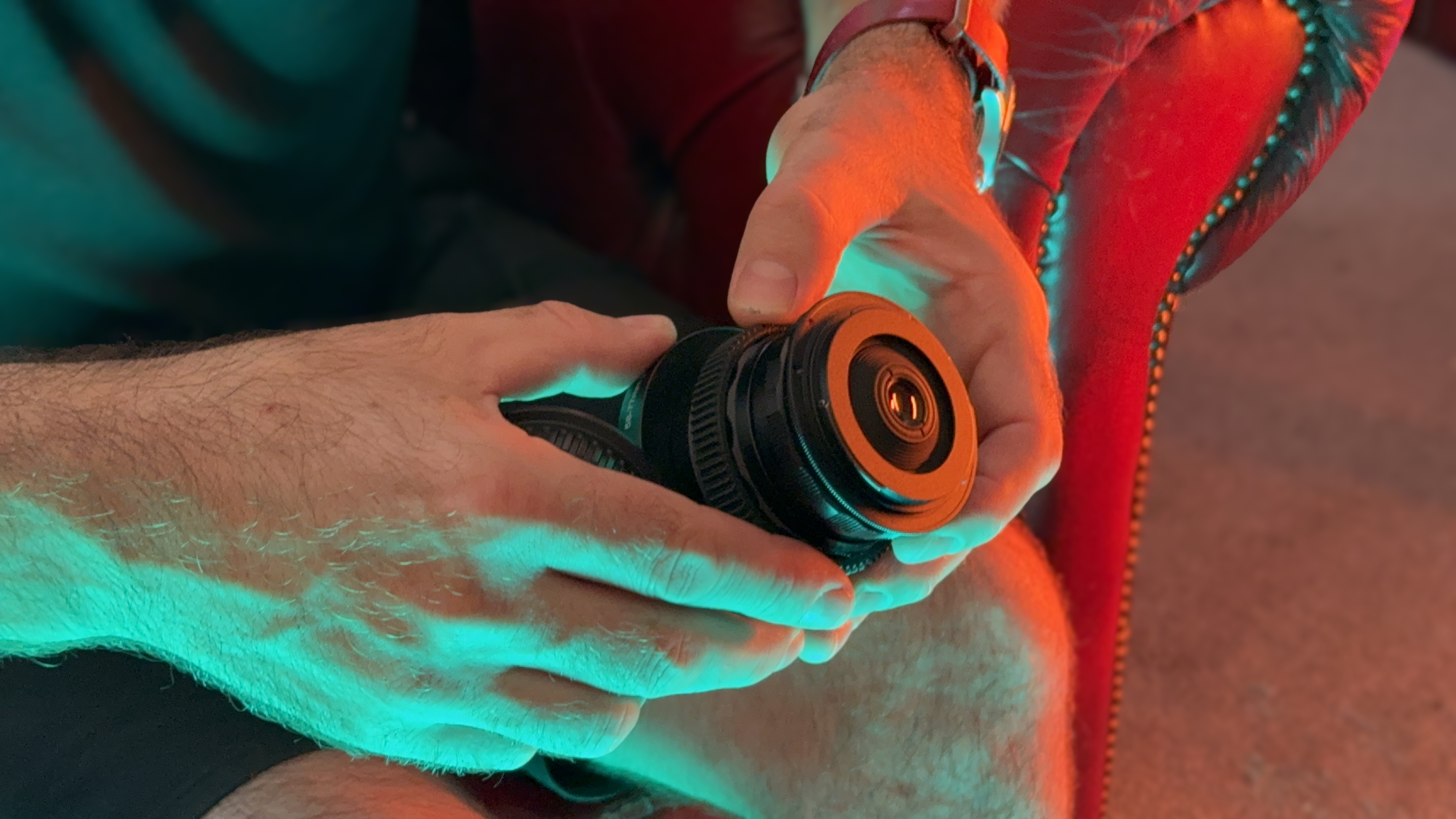
Are teal and orange on the opposite the color wheel?
On some color wheels, yes! The orange is on one side and the blue-green is on the other, so it does give you that contrast. You can create contrast in a lot of ways. You can do it with dark and light, or you can do it with opposing colors. So if you can’t control the light intensity in certain situations, you can add contrast by using colour.
I’m cycling back to that 20mm Vivitar macro lens that you mentioned earlier. You showed me a very dramatic shot captured by placing that lens really close to an actor’s face. Why did you choose that lens, and what was that lens doing in that shot?
In the film, we had two kinds of specialist lenses. I bought this specially for the production. This is a 20mm Vivitar – it's incredibly well made, and Vivitar is not necessarily known for the build quality, but this is a beautiful bit of technology. I think it’s from the early Seventies. It's a 20mm f/3.8 and it will focus nearly up to touching the lens, like half an inch from the lens. So you can bring it right into someone's eye, and get a huge, wide macro shot.
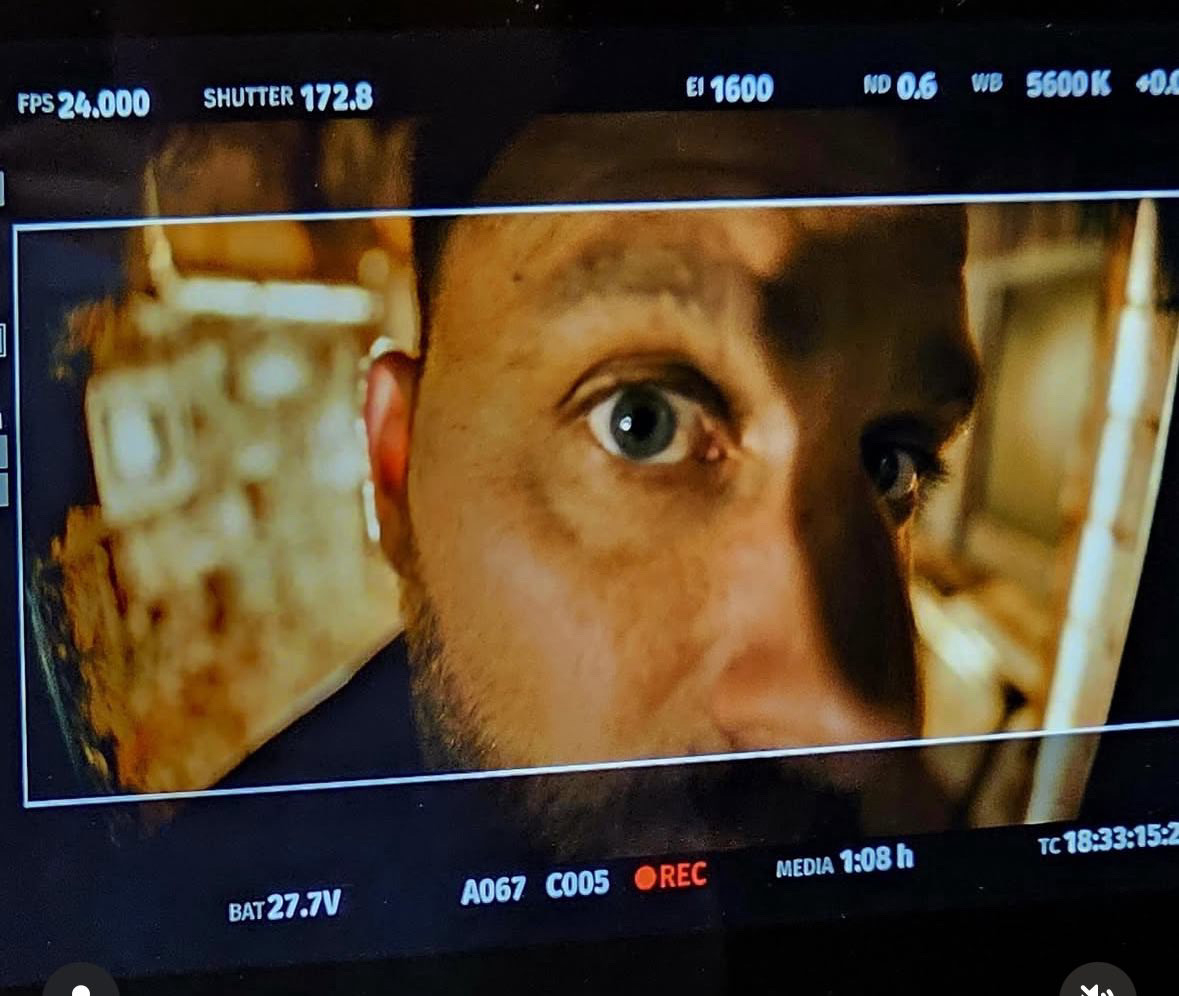
We had two macro lenses on the production, this and a Laowa. I think that's also 20mm, but it's a big, long, thin probe lens. Again, not a hugely expensive lens. That was an EF mount as well. So we used that to get into packets and things and get very close to objects.
But it's quite an imposing, sharp bit of kit, and you don't really want to put it near an actor's eye! But the Vivitar lens is nice. It's a big, soft, flat thing that's not going to hurt anyone. So I use this quite a lot for being close to actors, basically.
Did you use the probe for cocaine snorting shots?
[Laughs] We did! There was a lovely shot in the movie that goes down a rail of cocaine and then up to a wide shot, and my wonderful focus puller was able to pull focus. So we start on macro, almost touching the rail of cocaine, then pull out to a three-shot. It's 20mm full frame, so that's about 14 or 16 on an APS-C sensor. It's a good shot. I hope it makes it into the film because it took a long time.
You’ve created a custom LUT (look up table) to complement the retro filmic look produced by the vintage lenses. Tell me more about that.
Over the last three or four years, I've been working on a look up table for the Alexa LF, but also I've been making a version for Sony cameras and Blackmagic cameras that works across the board. It's emulating early Eighties and early Nineties film stocks.
It’s based on a Fujifilm stock with some modern tweaks. When you put it in the camera on set, it will give you a very graded contrasty look that I like, that you get from film. So it's more of a film than a digital camera look.
So, seeing the effect of the LUT on set is just a preview of what the shot will look like in the edit?
Yes. It's not burnt onto the footage. It's something that you see on the monitors, and the camera is still recording S-Log or RAW. And then you're dropping it back on again when you’re editing in Da Vinci or whatever you’re using.
So I guess previewing the LUT in action on set means that you can light the scene accordingly?
Exactly. So you end up lighting in a more filmic way because you can see that the shadows are much deeper and the highlights clip later. You can see that the way you light makes it look more filmic because you're having to put light in places you wouldn't otherwise, and you're not putting light in some places that you would with a modern digital camera. So yes, it changes the way you light.
What’s your LUT called?
The LUT I've developed is called Errorchrome. What it does is shift the way the camera sees things. It creates a one-stop reduction in exposure, first of all. So you end up with much more highlight retention, you have more space for highlights, so it doesn’t clip for ages.
You can have something really bright in the frame and something really dark, and then the skin tone in the middle. And you can have a darker skin tone and a brighter skin tone, and they will balance and look good in the shot.
So it's a race-agnostic LUT?
I see what you mean. I worked on a show with a load of really dark-skinned actors and a load of white-looking actors, and I was able to balance the two. Film stocks are still based on Chinese, Japanese and English skin tones from the Fifties. So yes, I’m moving that along.
First of all, it makes darker-skinned people look really good, and then it, as a secondary thing, makes white people look okay as well. But it's to redress that a bit. But basically, the headline is it's a film emulation LUT.
You can purchase Andrew’s Errorchrome LUT here.
You might also like...
For more kit for filmaking – check out our guides to the best camera for video or the best Netflix approved cameras
The best camera deals, reviews, product advice, and unmissable photography news, direct to your inbox!
George has been freelancing as a photo fixing and creative tutorial writer since 2002, working for award winning titles such as Digital Camera, PhotoPlus, N-Photo and Practical Photoshop. He's expert in communicating the ins and outs of Photoshop and Lightroom, as well as producing video production tutorials on Final Cut Pro and iMovie for magazines such as iCreate and Mac Format. He also produces regular and exclusive Photoshop CC tutorials for his YouTube channel.
You must confirm your public display name before commenting
Please logout and then login again, you will then be prompted to enter your display name.
